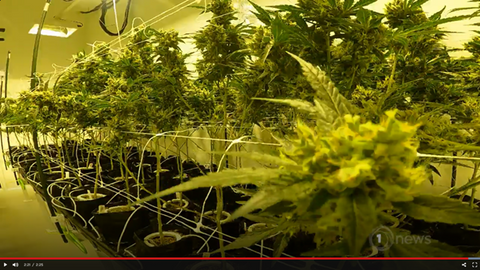
DX50 Chosen by Medicinal Cannabis Grower for Disinfection
Share

Canterbury-based medicinal cannabis grower, Kalyx Ltd, has reduced its operation costs since switching to DX50 Chlorine Dioxide to sanitise its hydroponic water and equipment.
Used by hydroponic growers around the world, chlorine dioxide is an eco-friendlier sanitiser, fungicide, and deodoriser. MPI approved and highly effective, DX50 enables growers like Kalyx to produce top grade medicinal cannabis products that meet the world’s toughest standards.
In this blog, Kalyx Co-Founder and Plant Manager, Dwight Bailey, talks about their Canterbury hydroponic facility and the challenges of growing medicinal cannabis for the New Zealand market.
| Customer: | Kalyx Limited, New Zealand medicinal cannabis grower |
| Product: | DX50 Chlorine Dioxide – sanitiser and fungicide |
| Purpose: | To sanitise bore water supply and keep hydroponic equipment free of biofilm |
| Reason: | DX50 chlorine dioxide is a more cost-effective sanitiser than hydrogen peroxide, and it is certified for organics. It ensures that Kalyx dried cannabis flower products meet the strictest GMP standards in the world. |
Growing medicinal cannabis for Kiwis
When Dwight Bailey joined his childhood friend Jesse O’Steen to help with the Christchurch rebuild in 2012, he never expected they’d end up in business together growing medicinal cannabis legally in New Zealand.
Back in their home state of California, regulated cannabis was legalised for medicinal use when the Compassionate Use Act was passed there in 1996. In New Zealand however accessing or growing cannabis for medical use was still illegal.
Since then, mounting and compelling evidence of the drug’s efficacy has seen several countries - including Australia, Canada, Germany, and the Netherlands – relaxing their restrictions on medical use of cannabis on compassionate grounds.
Interest amongst Kiwis also grew as news spread of cases where cannabis products were being used for treating severe epilepsy, multiple sclerosis, and chronic pain. Seeing this public shift in perspective and other countries rapidly increasing their commercialisation of pharmaceutical-grade medicinal cannabis made New Zealand realise the huge export opportunity it was missing out on.
Parliament quickly passed the Misuse of Drugs (Medicinal Cannabis) Amendment Act in 2018 to allow for the development of a domestic market for regulated medicinal cannabis products that would be available on prescription.
Scientifically proven pain relief, or a shunned stigma?
When they learned that New Zealand was legalising medicinal cannabis, Dwight and Jesse immediately saw the business opportunity having both worked in the cannabis industry in California.
The market growth predictions spoke volumes. In 2022, the global medical cannabis market size was valued at USD 10.2 billion. It is now expected to grow at an annual growth rate of 24.0% to USD 70.6 billion by 2031.
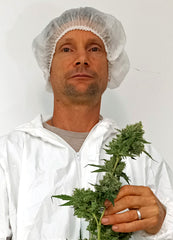 For Dwight there was also a personal reason. He was diagnosed with cancer while studying botany at Humboldt State University and used cannabis to relieve the effects of chemotherapy.
For Dwight there was also a personal reason. He was diagnosed with cancer while studying botany at Humboldt State University and used cannabis to relieve the effects of chemotherapy.He explained, “Chemotherapy destroyed my appetite and, as the old cliche about Cannabis [giving you the munchies], it has been shown to be a clinical benefit. After graduating from Humboldt State, in the heart of the famous cannabis cultivation "Emerald Triangle" of northern California, I worked in a microscope lab at the USDA in Berkeley. I later joined the cannabis industry in California when it had matured to the point where there were cooperatives and worked there for over 15 years.
“It’s a personal journey for me - from my own experience with cancer, to wanting to help others manage their pain, to now bringing cannabis to New Zealand where it’s been stigmatized for a long time,” said Dwight.
Cannabis classification: herb or pharmaceutical?
Cannabis is an enigma. It is both a banned psychoactive narcotic and an effective remedy for chronic and debilitating pain. It’s been proven that cannabinoid compounds in the cannabis plant can alleviate multiple health problems such as nausea and vomiting during chemotherapy, spasticity in multiple sclerosis, and even drug-resistant seizures in childhood epilepsy.
In fact, the medical benefits of cannabis have been known around the world for millennia. It was first listed in 2800 BC in Emperor Shen Nung's pharmacopoeia, and later in the texts of the Indian Hindus, Assyrians, Greeks, and Romans, as a treatment for multiple ailments including arthritis, inflammation, depression, and asthma.
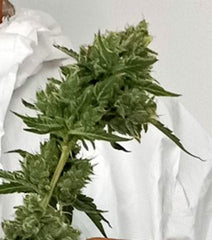
Unlike traditional pharmaceuticals, cannabis has multiple active compounds that can’t be patented or protected. The two most dominant ones are cannabidiol (CBD) and tetrahydrocannabinol (THC) which bind with receptors in our body and control pain, mood, sleep, and memory. THC creates the euphoric high effect more.
Dwight says that for the best effect patients generally prefer full-spectrum cannabis products - freshly dried cannabis flowers over isolated compounds like CBD.
But one of the reasons this easily grown natural pain reliever and mood enhancer is banned is because it is a psychoactive substance that has been linked to a wide range of both physical and mental effects. This has forced governments around the world to grapple with lobbyists on all sides on whether or how cannabis products should be made accessible to the public – medicinal or otherwise. Consequences range from outright ban and imprisonment to a more tolerant approach with distribution of medical cannabis through regulated dispensaries.
Meeting the world’s toughest quality standards
Interestingly, the NZ Drug Foundation estimates that 266,700 Kiwis use cannabis therapeutically, but just 6% access their cannabis product legally. They claim the barriers for patients are not about access, but cost and product quality.
While New Zealand’s law review on medicinal cannabis in 2020 enabled the implementation of the Medicinal Cannabis Scheme, the resulting framework didn’t make it easy for New Zealand’s cannabis industry to get established.
It not only stipulated that NZ medicinal cannabis would have to meet the world’s toughest European GMP standards, it set a pharmaceutically oriented classification and distribution model that requires growers like Kalyx to cultivate their medicinal cannabis under strict conditions, pass rigorous tests, and to have consistent cannabinoid levels.
The aim was that NZ’s new medicinal cannabis industry would follow in the footsteps of our successful wine industry.
Shelf life: fresh is best
Shelf-life stability of cannabis flowers is very important, but before Kalyx’s products can be prescribed to a New Zealand patient through a doctor, the flowers must be shipped to Australia for a GMP certified lab to test and approve each batch. Once approved, they are then irradiated, manufactured, and imported back into New Zealand by Auckland importer NUBU Pharmaceuticals.
The rigamarole takes an agonising 6-months that Kalyx says affects product quality. In contrast, within a month of Californian cannabis being harvested, a person can go into their local dispensary and see and smell the quality of the product before they buy.
Dwight says that if the process and timeframe could be streamlined, and the product better classified, it would make things a lot easier for New Zealand’s cannabis industry.
“The fresher the product is, the more benefits a patient will get from the terpenes and aromatic compounds in cannabis. So, with the hurdles, it’s hard to deliver product fresh enough to the buyers that they will be happy with. We set out to provide the best quality that we can for New Zealanders, but the way the regulations are set up makes this virtually unachievable.”
“Back home, it wasn’t an issue for us to meet the required spore, leaf mould, and bacterial counts as they set the level high. But when they told us that we had to meet European Pharmacopoeia standards it was like wow, that was big. New Zealand has put in place the strictest microbial standards in the world to meet inhalable product standards for Ministry of Health approved products. So, no, they definitely didn't make it easy on us to start out with. That said, we're well on our way now. We feel like we've reached the top of the hill.”
Thankfully, using DX50 as both a water sanitiser and fungicide, means that Kalyx can ensure their flowers meet the standards, and that their hydroponics facility and plant health are in optimum condition from seed to harvest.
Sanitising hydroponic operations with DX50 Chlorine dioxide
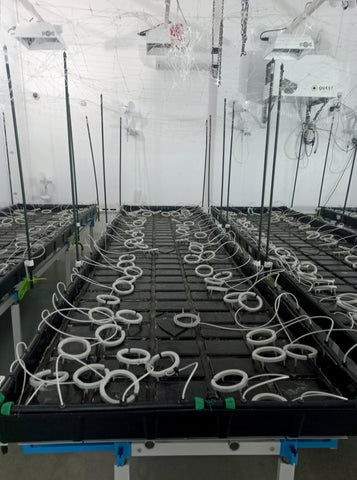
As experienced cultivators, Jesse and Dwight invested in importing and constructing a modern hydroponics facility for their cannabis growing operation. The advantage of hydroponics over soil is that it reduces the introduction and spread of pests and diseases and allows healthy plants to grow all year around under optimum controlled growing conditions. Also, hydroponic systems generally use minimal water as it is recycled through the facility.
However, poor quality or untreated source water can cause major problems. Harmful bacteria or fungi in the water such as pythium, phytophthora and fusarium can spread rapidly and affect the health of the plants. Algae, mould, and biofilm can also build up in the pipes and block emitters which can cause a major headache for growers.
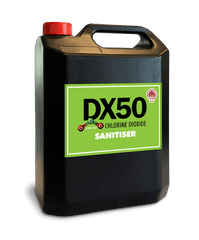
Treating the water and sanitising the facility thoroughly between harvests will solve this problem.
Most growers typically use oxidisers to disinfect their hydroponic operation, and one of the safest and most cost-effective solutions used globally is chlorine dioxide.
“I first heard about chlorine dioxide during the pandemic. I looked into it and then kept hearing more and more about how it prevents biofilm build up. While we have access to good bore water at our facility, the main reason we chose DX50 Chlorine Dioxide is to keep biofilm out of our irrigation lines.
“We have four rooms at our facility. They are on an eight-week flowering cycle, and we're harvesting flowers every two weeks. Each room has about 410 emitters, which means we have over 1600 in total, so it would be a bit of a disaster if we had to change them all because of biofilm build up.
“We invested quite a bit of money in our irrigation setup, and we really don't want to have to do it again. So, it’s worthwhile using a sanitiser like DX50 to prevent any biofilm building up and fouling our emitters. We also use DX50 to sterilize other equipment including the trays and bags that we reuse instead of pots.”
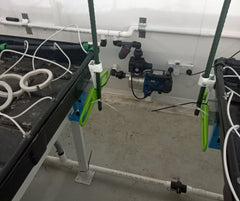

DX50 Water Treatment is certified for organics
Unlike systemic chemicals that can make plants toxic to consumers, chlorine dioxide is an oxidiser which means it doesn’t get absorbed or transported through the plants. Also, unlike other sanitisers like sodium hypochlorite (chlorine bleach), chlorine dioxide doesn’t leave any carcinogenic residues.
It is extremely effective at killing fungi, mould, bacteria, biofilm, and it can kill and flush out algae in irrigation systems when shock dosing. For these reasons, chlorine dioxide is certified to use in organic production.
Furthermore, because a smaller amount is needed to do the same job effectively, chlorine dioxide is cheaper to use than other options such as hydrogen peroxide, UV, or ozone.

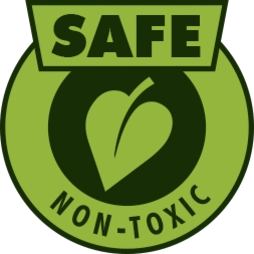
Kalyx says that DX50 is “the better way to go”
Using DX50 enables hydroponic growers like Kalyx to cultivate plants that will meet the world’s strictest quality standards.
“Before we changed to DX50 we had looked into using hydrogen peroxide, but the cost was too high to implement. With DX50 chlorine dioxide we get great results for significantly less cost than hydrogen peroxide. It’s the better way to go,” said Dwight.
“Every 10 days or so, we dose each of our 3500L water tanks with 600mls of DX50 chlorine dioxide. Once it's fully mixed, I then add the nutrient salts. It’s my own proprietary mix of macro and micronutrients that I've used for decades from when I was in California. It includes nitrogen, phosphorus, and all the elements you would need for growing cannabis – it’s similar for growing tomatoes, capsicums, etc in any hydroponic operation,” said Dwight.
Kalyx is pleased with how DX50 is working out for them and is now looking at where else the solution might benefit their operation. Chlorine dioxide is widely used in the food processing and agriculture industries to keep food and flowers safe and fresh, and Kalyx is investigating the possibility of treating finished cannabis flower product with chlorine dioxide as an alternative postharvest sterilisation solution.
Kalyx medicinal cannabis flower approved by Medicinal Cannabis Agency
Dwight says the last three years have been ‘nail-biting’ setting up Kalyx. Living with his young family in Northland and commuting down to the Kalyx facility in North Canterbury every month has also been tough, and he says that none of it would have been possible without the support of his kiwi wife, Claire, who has helped to make ends meet by running a small drive-through coffee shop Waycup in Kerikeri.
“Had I known what I know now I may not have forayed into this, but we’re here now with payments from our first batches coming through and orders for as much as we can produce. So, we’re well on our way to getting to the point where we can actually take a bit of a workload off ourselves,” he said.
In May this year, the Medicinal Cannabis Agency verified Kalyx to supply the first locally grown medicinal cannabis flower available from New Zealand. It was a major milestone not only for Kalyx, its distribution partner NUBU Pharmaceuticals, and the cannabis industry, but also for kiwi patients keen to get locally grown dried cannabis flower options.
From his own personal journey of using cannabis to overcome the effects of chemotherapy, Dwight knows firsthand the relief that medicinal cannabis can bring to those who need it.
“Hopefully, things will improve over time. We've been in talks with the government individually and as part of a small growers group. We hope that our efforts and ideas to streamline the process as well as decrease the timeframes for export and testing were taken on board. The larger companies have formed a council that does more of the lobbying. My focus is on the patient; medicinal cannabis shouldn’t be a remedy to hide from,” he says.
Watch this recent 1News story about Kalyx: Locally grown cannabis flower signed off by officials

